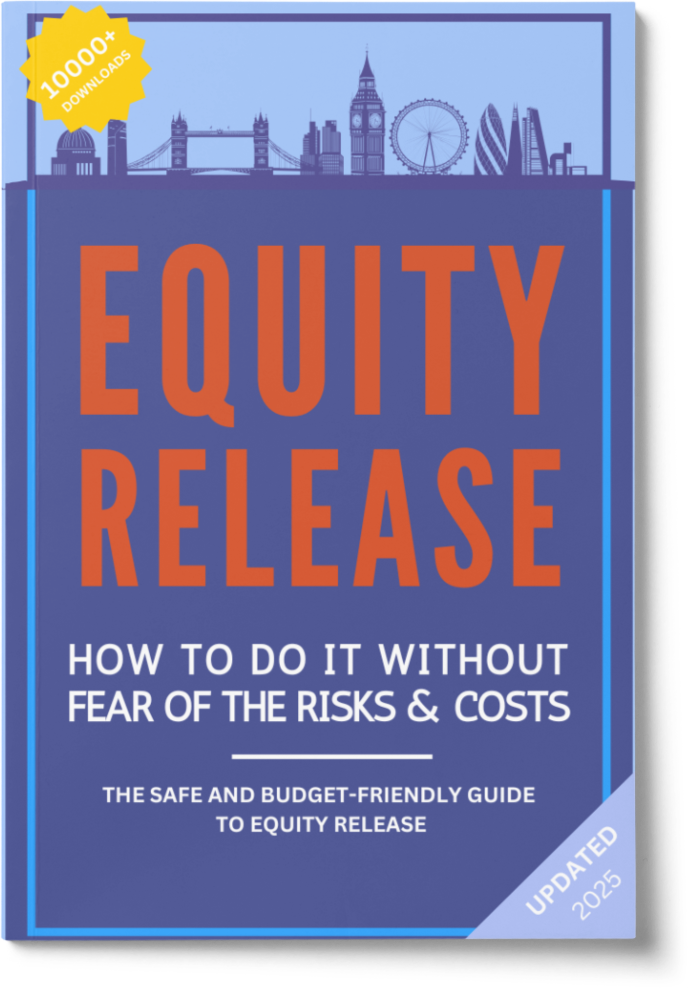Equity Release Process in 2025: Step-by-Step Guide

SovereignBoss adheres to a stringent code of editorial guidelines, but some articles may feature partner references. Here is an explanation for how we make money.
- The equity release process in the UK typically involves a financial assessment, property valuation, legalities sign-off, and finally, the release of funds.
- It can take between 6 to 8 weeks from application to completion, although this can vary based on circumstances.
- Key steps in the process include initial consultation, property valuation, legal documentation, approval, and finally the release of funds.
- Once an equity release plan is in effect, it generally cannot be reversed, making it critical to understand the long-term implications before proceeding.
- It involves various fees including legal, adviser, valuation, and potential lender fees.
Understand the equity release process so you do not waste your time with the wrong advice.
Releasing equity from your home in 2025 could be easier than you think!
Did you know that in the 2nd quarter of 2022, over 200 customers per day opted for equity release to help with their finances in retirement?1
In This Article, You Will Discover:
While it may seem overwhelming, we are here to help you.
Our team at SovereignBoss has done all the necessary research on the step-by-step of getting a plan and have broken it down for you.
Here is what to expect in 2025.
What Is Equity Release?
Equity release enables homeowners to tap into the value of their property, offering a lump sum or regular income while they continue living in their home.
It's an innovative solution that combines financial needs with personal preferences, notably through equity release mortgages, which are explained as a means to secure a financial lifeline without moving.
Step-by-Step Equity Release Application Process:
Here is a step-by-step of the equity release application process:
- Step 1: Selecting the right financial advisor or broker
- Step 2: Choosing a provider and plan
- Step 3: Preparing your application
- Step 4: The property valuation process
- Step 5: Accepting the offer and proceeding with your plan
- Step 6: Consulting your solicitor about the legalities
- Step 7: Finalising your plan
Pro Tip: Be sure to choose a provider who is authorised and regulated in the UK by the Financial Conduct Authority (FCA) and / or the Prudential Regulatory Authority (PRA) and holds a membership with the Equity Release Council (ERC).
Taking this step ensures that your interests are protected by strict standards and codes of conduct.
The Equity Release Process Explained
The process involves several key steps, starting with an individual eligibility assessment with advice from a qualified equity release advisor.
Once a suitable plan is chosen, an application is made, and a valuation of the property is conducted.
Finally
Legal paperwork is completed, funds are released, and the mortgage commences, allowing homeowners like you to access the equity tied up in your property.
The most important part of the process is, arguably, obtaining professional advice from a specialist or broker.
They will be able to take a holistic view of your current situation and future goals to determine whether equity release is the best solution.
They will also be able to run through the potential drawbacks such as the impact on your inheritance, the effect it will have on your state benefits, and the costs involved.
How Long Does the Equity Release Application Process Take?
The duration of the application process can vary depending on various factors.
On average, it typically takes around 6 to 8 weeks from the initial application to the release of funds.2
However
The timeframe can be influenced by factors such as the complexity of the case, the responsiveness of all parties involved, and the efficiency of the chosen provider.
Take note
Each application is unique, and the actual timeline may vary.
How to Prepare for Your Initial Equity Release Appointment
To prepare for your initial appointment, gather key information, including your property value, outstanding mortgage balance, and any other loans secured against your property.
Compile details about your income, savings, and investments, as well as any existing pension schemes.
Consider your goals and questions to discuss with the advisor and be ready to provide accurate and honest information.
Using a lifetime mortgage calculator can give you an estimate to take to your advisor.
10 Documents You Need to Prepare
10 required equity release documents you need to prepare, include:3
- Proof of Identity: Valid identification documents such as a passport or driver's license for all applicants.
- Proof of Age: Documents verifying the age of all applicants, such as a birth certificate or a valid passport.
- Property Valuation: A recent valuation report of the property you wish to release equity from.
- Mortgage Statement: If you have an an existing mortgage on the property, provide a copy of the latest mortgage statement.
- Title Deeds: Copies of the title deeds or property ownership documents.
- Buildings Insurance: Details of your current buildings insurance policy, including the insurer's contact information.
- Proof of Income: Documents showing your sources of income, such as payslips, pension statements, or bank statements.
- Outstanding Debts: Information about any outstanding debts, loans, or credit commitments you have.
- Proof of Address: Recent utility bills or bank statements showing your current address.
- Legal Information: Details of any legal agreements or obligations related to the property, such as shared ownership agreements or leasehold documentation.
Understanding the Equity Release Completion Process
The completion process involves a few key steps to access the funds:
- Legal Documentation: Engage a specialised solicitor who prepares the necessary paperwork and explains the terms and conditions.
- Valuation and Survey: The lender conducts a valuation and survey of your property to determine its value and condition.
- Offer and Acceptance: Upon completion of the valuation, the lender provides a formal offer with the terms of the plan. If accepted, you sign and return the acceptance documentation.
- Completion and Fund Release: Your solicitor finalises the legal process with the lender, leading to the release of funds to your nominated bank account.
Common Questions
How Long Does the Equity Release Process Take?
What Are the Steps Involved in the Equity Release Process?
Does Age Affect the Equity Release Process in the UK?
How Long Would It Take To Transfer Equity Release to Another Property?
What Professional Services Will I Need to Engage During the Process?
Does the Equity Release Application Process Differ for Single Applicants Versus Joint Applicants?
Are There Any Special Considerations for the Application Phase if I Own a Leasehold Property?
Can I Change My Equity Release Plan Midway Through the Process?
What Circumstances Could Cause My Equity Release Application to Be Denied?
What is the Process if I Want to Repay Part or All of My Equity Release Early?
Does the Application Process Include a Credit Check?
What Is the Equity Release Process in the UK?
Can I Reverse the Equity Release Process?
Are There Fees Involved in the Equity Release Process?
In Conclusion
Releasing equity offers a viable financial solution for individuals aged 55 or older to access the value tied up in their property.
By understanding the steps involved, engaging the right professionals, and carefully considering the terms and conditions, you can make informed decisions that align with your financial goals and aspirations.
Embarking on this journey can provide you with the means to enjoy your retirement years to the fullest, leveraging the value of your property through a well-structured and managed equity release process.
WAIT! Before You Start…
Equity Release Calculator
How Much Equity Can You Release?
Spotted a Mistake? Let us know here.




